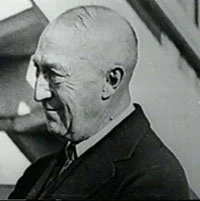In 1926, a wealthy Canadian lawyer and financier named Charles Vance Millar died in his sleep at the age of 73. With no close relatives and a significant fortune up for grabs, his law partners eagerly unsealed the envelope holding his will. What they found was ridiculously horrifying. It’s probably a good idea to pause here real quick to mention that Millar was known as a bit of a prankster. One of his favorite hobbies was to leave money on the sidewalk, and then secretly watch as random people scooped it up and furtively pocketed it. The guy was an odd-duck is what we’re trying to say. Anyways, Millar’s entire will was full of shenanigans. For instance, he gave his vacation home in Jamaica to three men who hated each other, he gave his stock in a brewery to a group of ministers and temperance activists, and he gave his stock in the local horse racing club to a group of anti-horse racing activists. However, it was the last part of his will that gained the most attention. The majority of his fortune, some seven million U.S. dollars in today’s money, was to go to whatever woman living in Toronto had the most babies in the next ten years.
Nobody really took Millar’s will all that seriously in the early days. Mention of its weird clauses made it into a couple of newspapers, and after that it was largely forgotten. A few of Millar’s most distant relatives tried to contest the will, but their efforts really went nowhere. All of this changed in 1932, when the government of the province of Ontario, not liking the idea of seven million dollars just sitting around for a stupid baby making contest, tried to pass a bill that would allow them to seize the money. While the attempt ultimately failed, it did bring the contest back into the public view, and this time a lot of people became very interested, what with it now being the middle of the Great Depression and all.
Now all of this might have been just a strange curiosity if it hadn’t been for the Toronto newspapers. Hungry for any story that didn’t include standing around in long unemployment lines, the newspapers used public records to hunt down women who had already had six babies over the past six years, dashing to their houses to try and get exclusive interviews. In some cases, the women hadn’t even heard of the contest until told by the newspaper reporters knocking on their doors. Dubbed the Great Stork Derby, the press began regularly printing leader boards and interviews with the potential winners, all of which was gobbled up by a public wanting to be distracted by the overall shittiness of their lives. After all, it wasn’t an easy time to be living in Toronto, again, because of the Great Depression. Thousands were out of work, a quarter of the population was on welfare, and many families were living in shacks.
The press was unyielding in its coverage of the story, often paying women for the right to write about every little piece of their life. They were of course not kind. Most of the women were poor as shit, and didn’t meet the preferred mold of Anglo-Saxon Protestant. Of the front-runners in the race, all were either immigrants, Catholics, and/or women who had children fathered by different men. The newspapers pounced on these poor women, braying about the shitty conditions in which they lived, calling them irresponsible and at times even trollops. The more lurid the descriptions, the more papers that got sold. The women were turned into caricatures. Family tragedies such as stillbirths, miscarriages, and even a baby dying after getting bitten by a rat, were covered in terms only related to how it affected the leader board. The women, desperate for money to help their families, and many planning on having large families anyways, went along with it. Some of the more enterprising used their fame to make money by endorsing products such as soaps. As the years ticked by, the toll on the mothers began to show. Many of the women were constantly in and out of the hospital for operations and transfusions. The infant mortality rate for women involved in the competition was six times the national average. A third of the babies born to these mothers died.
The race finally came to an end in 1936, at which time the front runners all got themselves lawyers to fight for a piece of the pie. A series of court cases ensued in which a judge eventually ruled that in order for a baby to count they couldn’t be bastards, they couldn’t be stillborn, and they had to be have been properly registered. These stipulations of course mostly affected the poorest of the bunch. Woman after woman was made to testify about every little detail of their personal lives and the deaths of their babies, with the whole traumatic affair punctuated by ribald comments by the rival lawyers. In total, seven women who had nine or more babies were eventually disqualified, leaving just eight mothers, all married middle class Protestants of an Anglo-Saxon background. Parts of the case were appealed and it eventually found its way clear to the Canadian Supreme Court, but in the end the decision was upheld. The four socially acceptable women split the prize, and so ended the Great Stork Derby.
Image: https://en.wikipedia.org/wiki/Great_Stork_Derby#/media/File:Charles_Vance_Millar.jpg
